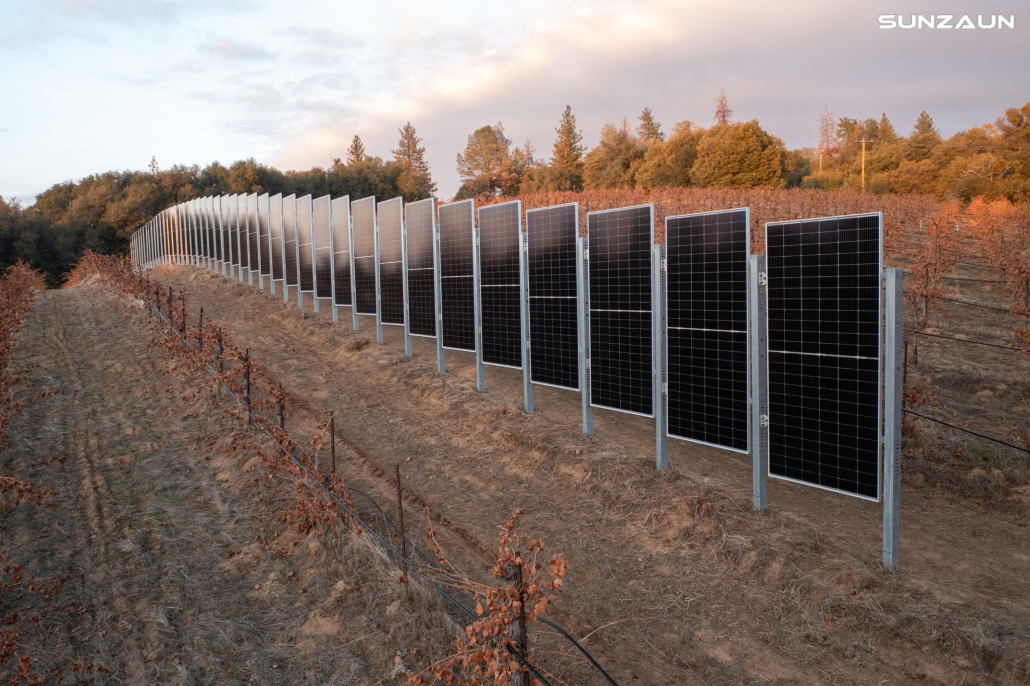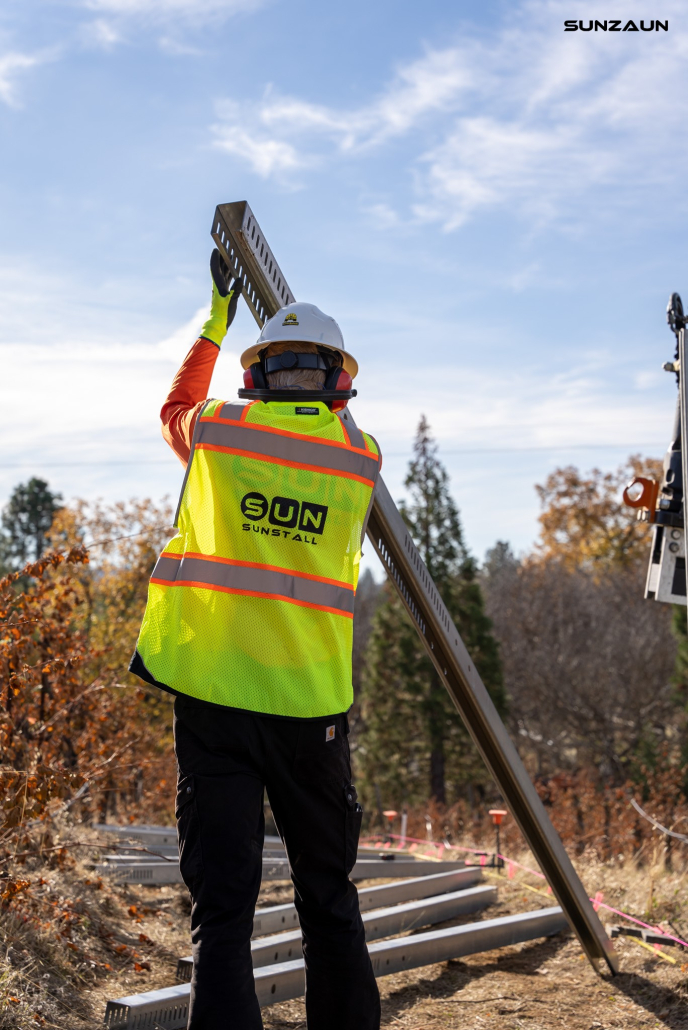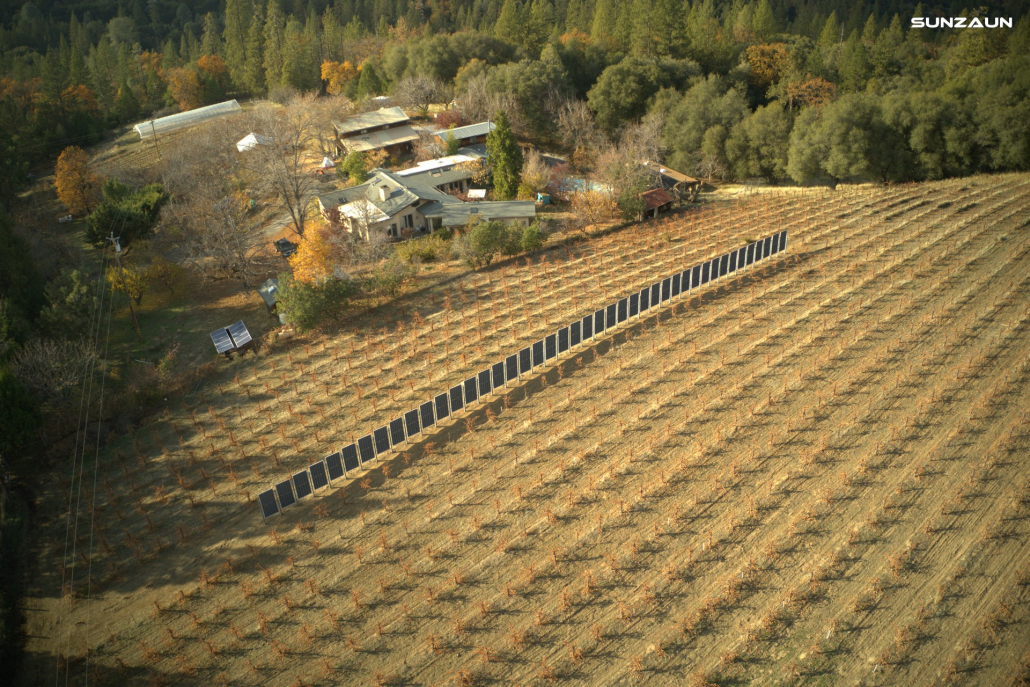This work contributes to agrivoltaic design methodology through a digital replica and genomic optimization framework which simulates light rays in a procedurally generated agrivoltaic system at an hourly timestep for a defined crop, location and growing season to model light absorption by the photovoltaic panels and the crop.
Tag Archive for: Agrivoltaics
The goal of this policy guide is to summarize both state and local regulations with implications for those wishing to establish agrivoltaic operations in the state of Illinois. The first part of this guide briefly gives a history of agricultural and renewable energy development in Illinois, as well as details agrivoltaic research efforts by the University of Illinois. The guide then covers local-level policies that will have bearing on agrivoltaic development. The final portion of the guide discusses state-level policy that may impact agrivoltaic development, especially in the instance of installing solar panels on agriculturally classified land.
Results of Agrisolar Soybean Pilot Project Revealed by PV Developer
“French solar developer TSE, in association with Alliance BFC, has unveiled the initial results of a pilot study in France on how solar panels can affect soybean growth. The teams observed solid vegetative growth of the soybeans, with normal flowering, fertilization, and physiological maturation. The six varieties tested presented a diversity of yields: up to 25% difference in yield under the canopy and 19% on the control field.” – PV Magazine
Oregon Research Studies Use of Vertical PV for Crop Production
“There are many different ways to install agrivoltaic arrays. One common method is to raise the array to leave space for farming equipment or livestock to move freely below. Another trending design is to orient the PV arrays vertically, leaving wide open spaces in between the array rows.
The paper found that an area about the size of Maryland would be needed if agrivoltaics were to meet 20% of U.S. electricity generation. That’s about 13,000 square miles, or 1% of current U.S. farmland. At a global scale, it is estimated that 1% of all farmlands could produce the world’s energy needs if converted to solar PV.” – PV Magazine
Research Shows Translucent Solar Panels Optimize Crop and Solar Harvest
“Associate professor Majdi Abou Najm from the Univ. of California, Davis, tested organic solar panels made from translucent material that absorb the blue light to generate electricity, but allow the red light with its longer wavelengths to pass through to the crops below.
At the UC Davis Agricultural Experiment Station, Abou Najm and his team planted three different plots of processing tomatoes, a common central valley California crop, under a canopy of selective red light, another of selective blue, and a third uncovered plot.
GNN has reported before on the recent phenomenon of ‘agrivoltaics,’ a practice of growing shade tolerant crops under solar panel arrays. The shade protects the crops from heat stress, while the plants’ transpiration humidifies the air beneath the panels, cooling them down and increasing their electricity output.” – Good News Network
How current and future research can help us understand the role of pollinator-friendly solar in biodiversity conservation.
In this first episode of the AgriSolar Clearinghouse webinar series, NREL’s Jordan Macknick, James McCall, and Haley Paterson join us to discuss the context and costs of agrivoltaics in the United States.
This study focused on the photosynthetic photon flux density and employed an all-climate solar spectrum model to calculate the photosynthetic photon flux density accurately on farmland partially shaded by solar panels and supporting tubes. This study also described an algorithm for estimating the photosynthetic photon flux density values under solar panels.
This research argues that non-negligeable amounts of water can be saved due to the windbreak effect caused by vertical agrivoltaic systems.
This work contributes to agrivoltaic design methodology through a digital replica and genomic optimization framework which simulates light rays in a procedurally generated agrivoltaic system at an hourly timestep for a defined crop, location and growing season to model light absorption by the photovoltaic panels and the chosen tomato crop.
This article provides a bibliometric analysis of agrivoltaic topics based on 121 publications indexed in SCOPUS, in which either economic assessments of agrivoltaics, agrivoltaic systems for crops and livestock animals, photovoltaic greenhouse and agrivoltaics with open field are discussed, or its ideas are used to analyze certain locations.

By Anna Richmond-Mueller, NCAT Energy Analyst
Sunstall, a California-based solar installer, is helping farmers harvest the sun twice with their new vertical solar system, known as Sunzaun. The Sunzaun vertical solar system was originally engineered by a company in Germany. After seeing successful installations of the product in Europe, Sunstall decided to bring the design to the United States. The market for agrivoltaic installations in America is growing, but one of the biggest barriers is tied to land use. Concern about installing solar on valuable agricultural land is common, and often increases as the solar system’s footprint increases. Traditional solar installations use a racking system to secure solar modules, which are then tilted to the appropriate angle on a horizontal axis. These tilted systems require a larger amount of land compared to vertical systems. Sunzaun is installed in a portrait orientation between two piles with no racking system involved. The minimalistic design uses holes in the module frames for a simple attachment to the piles without the need for a heavy racking system, while the bifacial modules themselves allow both sides of the panel to produce energy.
Sunzaun’s portrait orientation allows adjustments to be made more quickly during later stages of a project. In systems designed with a landscape orientation, the rails used to mount panels onto the racking system are cut to fit the expected panel size. Should the size of the panel change after all other components have been finalized, the project may be delayed significantly while the rails are reengineered to fit the updated panel size. Thanks to Sunzaun’s unique design, it is easy to adapt to a change in panel size by simply adjusting the distance between each pile. It is even possible to adjust the height of the panels from the ground if needed.

Completed in 2022, the first Sunzaun installation in the United States is located on a vineyard in Somerset, California. Although the vineyard owner already has rooftop solar on the property, an interest in new solar developments and agrivoltaics led to a new system within the rows of grapevines. Composed of 43 450-watt modules connected to a microinverter and two batteries, the Sunzaun system sits on a hillside between rows of grapevines. Only one row of vines needed to be removed to make room for the system, and harvesting equipment is still able to work in the field directly next to the Sunzaun. While it is too early to say for certain what additional benefits the Sunzaun may provide beyond on-site power generation, the benefit of preserving grapevines alone is a significant win for the winery.

As the United States continues to take steps to combat climate change, innovative solar system designs are more important than ever. The Sunzaun’s streamlined design reduces the time it takes to get agrivoltaic projects off the ground. When you factor in the ability to save valuable crops and viable land with a vertical system, the minimalistic approach that Sunzaun offers farmers becomes even more appealing. A successful growing season at the Somerset vineyard will hopefully reveal even more benefits to installing this promising product and encourage others to consider the value of a vertical solar installation as well.
All photos courtesy of Sunstall Inc.
